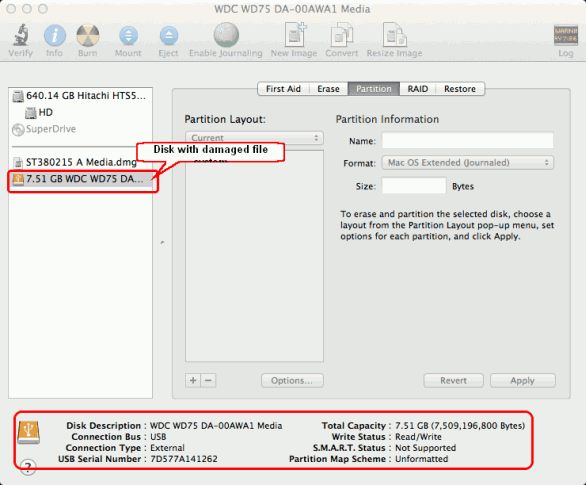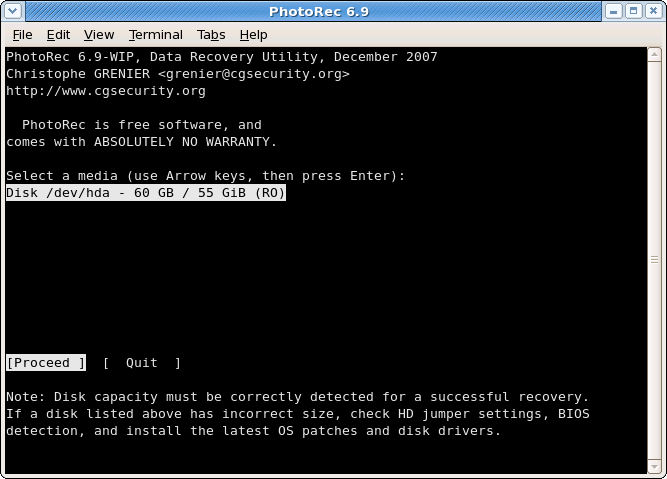Macos Mount Raw Disk Image
| Click here to return to the 'Restore a full-disk .dmg file to a raw block device' hint |
Mac Os X Mount Raw Disk Image Linux
“How to mount raw disk images?” (StackExchange, May 2015) To make a disk image of a floppy disk on OS X Insert the floppy into your external disk drive. Wait for it to auto-mount. For most ISO images you can mount them simply by double-clicking the ISO image file, and it will go through the auto-mounter app within Mac OS X putting it on your desktop. If for whatever reason that doesn’t work there are other methods to mount ISO’s within Mac OS X, and we’ll cover ways to do this with the built-in Disk Utility and a.
Wow, great hint. This is going to go to good use. Thanks!
Somehow I thought that was what the menu item Images -> Scan Image for Restore always did... but I suppose there has been at least one occasion where this may have actually been what I needed.
g=
Happily, I've never found myself in a position where I needed to restore my backup image files, (made with Carbon Copy Cloner.) But I'd like to know the routine if I ever need to use it.
My question: since I back up separate partitions into separate disk image files, is this hint inapplicable to me? Does this hint only apply to backing up multiple partitions into a single disk image?
(I had no idea it was even possible to backup multiple partitions to a single disk image...)
This is great. I was getting real frustrated with Disk Utility's non-specific error messages. This worked just like you said it would.
Mac Os X Mount Raw Disk Image Reader


Mac Os X Mount Raw Disk Images
Great post. However, when I tried this I got a 'Resource busy' error.
In order to avoid this problem, you have to make sure the mac OS isn't 'using' the device first. To do this just open the DiskUtility.app, and on the target USB hard drive, unmount any of it's partitions. Make sure to not eject the USB hard drive so that the device is still available in DiskUtility and shows up in the result from 'diskutil list'.

Many thanks to you and daveosborne for your hints !
1) I'm currently dumping the content of a .dmg file to an external disk.
2) 'with an appropriate buffer size to copy over the whole block image, including partition table and boot sector'
-> what do you mean by that and how can I determine which buffer size is appropriate ?
-> how did you determine the 131072 size ?
For my use I trusted blindly the example and used the bs=131072 option. Untill now it seems to be working... (it's still copying).
I'm currenlty getting tons of lines on my terminal screen that look like :
...
CZlibDecompressor::decompressData: src 0x02E4AA97 srcLen 116073
CZlibDecompressor::decompressData: dest 0x02E26000 destLen 262144
CZlibDecompressor::decompressData: src 0x02E61F0D srcLen 20723
CZlibDecompressor::decompressData: dest 0x02E26000 destLen 262144
...
with sometimes long series of
...
CZlibDecompressor::decompressData: src 0x02E66B71 srcLen 1167
CZlibDecompressor::decompressData: dest 0x02E26000 destLen 262144
CZlibDecompressor::decompressData: src 0x02E66B71 srcLen 1167
CZlibDecompressor::decompressData: dest 0x02E26000 destLen 262144
...
I notice the destLen (I suppose it means block destination length) 262144 is exactly the double of the bs=131072 that was used before. I'm curious if anyone can help me understand this. Does this mean the source data is sparsed over the destination disk by blocks of 131072 or 262144 bytes, thereby fragmenting the disk ?
In your replies, please kindly take into account that I'm a French newbie with a fair level of ignorance of OSX command line technical slang, however not completely ignorant with computers either (one piece of paper even says I'm an engineer :), it's just that I don't understand what the buffer size technically means here.
Many thanks in advance for your insights !
Comments are closed.